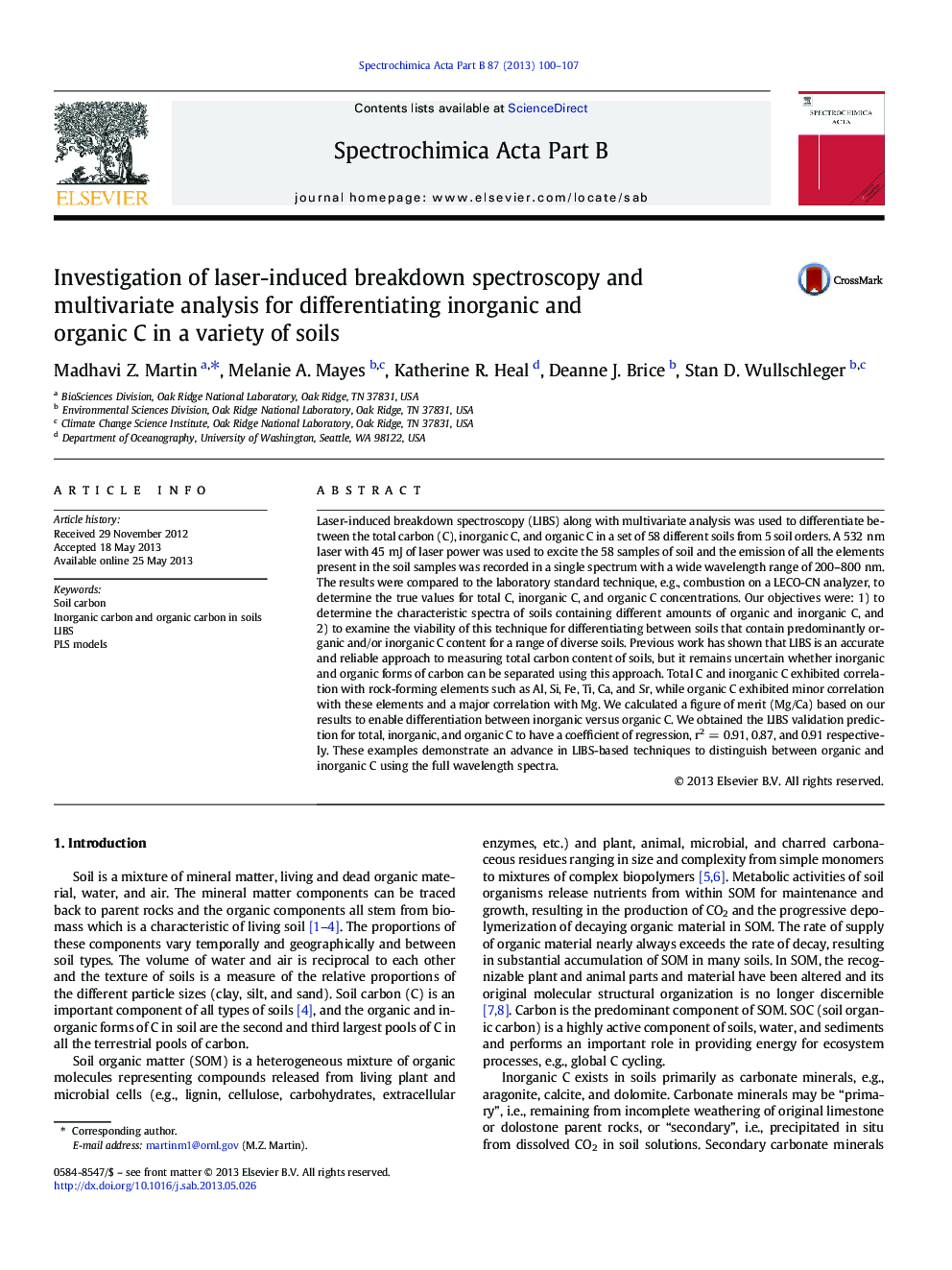| Article ID | Journal | Published Year | Pages | File Type |
|---|---|---|---|---|
| 1239917 | Spectrochimica Acta Part B: Atomic Spectroscopy | 2013 | 8 Pages |
•This research has successfully identified the organic and inorganic carbon in soil.•Multivariate analysis was used to show success in building a statistical model.•Can be used to classify soils which contain either inorganic or organic carbon
Laser-induced breakdown spectroscopy (LIBS) along with multivariate analysis was used to differentiate between the total carbon (C), inorganic C, and organic C in a set of 58 different soils from 5 soil orders. A 532 nm laser with 45 mJ of laser power was used to excite the 58 samples of soil and the emission of all the elements present in the soil samples was recorded in a single spectrum with a wide wavelength range of 200–800 nm. The results were compared to the laboratory standard technique, e.g., combustion on a LECO-CN analyzer, to determine the true values for total C, inorganic C, and organic C concentrations. Our objectives were: 1) to determine the characteristic spectra of soils containing different amounts of organic and inorganic C, and 2) to examine the viability of this technique for differentiating between soils that contain predominantly organic and/or inorganic C content for a range of diverse soils. Previous work has shown that LIBS is an accurate and reliable approach to measuring total carbon content of soils, but it remains uncertain whether inorganic and organic forms of carbon can be separated using this approach. Total C and inorganic C exhibited correlation with rock-forming elements such as Al, Si, Fe, Ti, Ca, and Sr, while organic C exhibited minor correlation with these elements and a major correlation with Mg. We calculated a figure of merit (Mg/Ca) based on our results to enable differentiation between inorganic versus organic C. We obtained the LIBS validation prediction for total, inorganic, and organic C to have a coefficient of regression, r2 = 0.91, 0.87, and 0.91 respectively. These examples demonstrate an advance in LIBS-based techniques to distinguish between organic and inorganic C using the full wavelength spectra.
